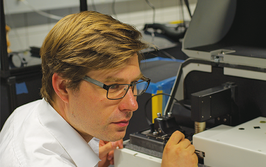Detection of Plasticizers and Flame Retardants in Polymers by Pyrolysis GC-APCI QTOF MS

contributed by CDS |

The ability to confidently detect specific target compounds is critical in many analytical workflows related to human health and safety. In some cases, such screening is challenged by the physical form of the samples and by the chemical nature of the targets themselves. In this study, pyrolysis GC-APCI QTOF MS is used to detect potentially hazardous plasticizers and flame retardants in various fabric samples.
Introduction
Polymeric materials are made in a wide array of forms to serve an equally wide scope of uses within day to day life, from plastic bottles to toys and upholstery foams to garment fabrics. In order to meet necessary requirements for utility (e.g., flexibility or durability) or safety (e.g., resistance to fire or tensile strength), plasticizers or flame-retardants are often added. In the case of clothing fabrics, such compounds may be applied to natural fibers as well. Unfortunately, many of these compounds have been shown to be toxic to humans.
Log in or register to read this article in full and gain access to The Analytical Scientist’s entire content archive. It’s FREE!

















